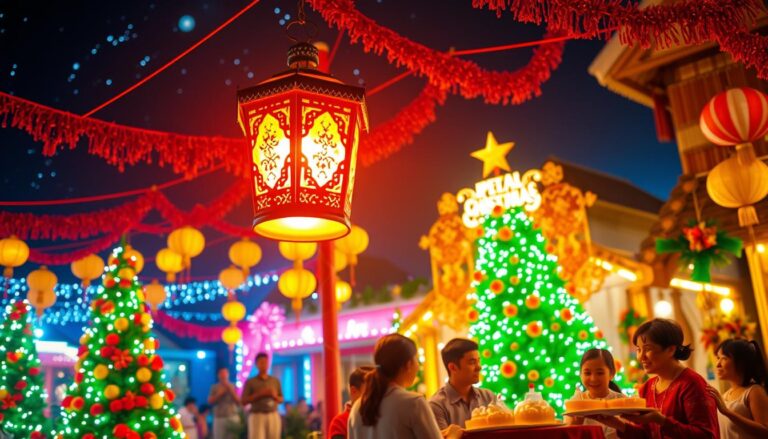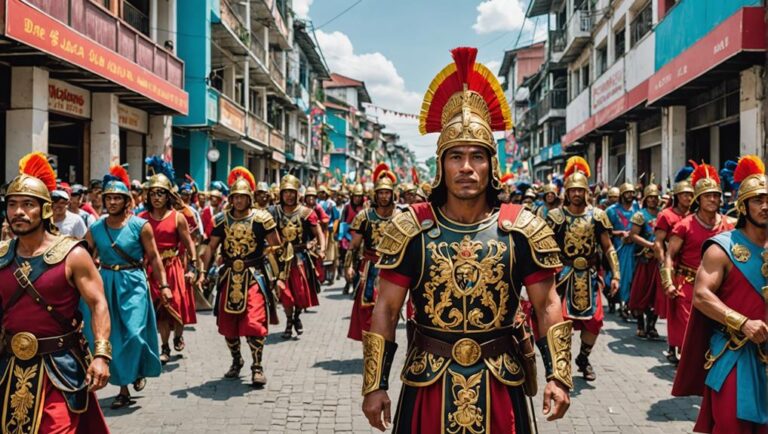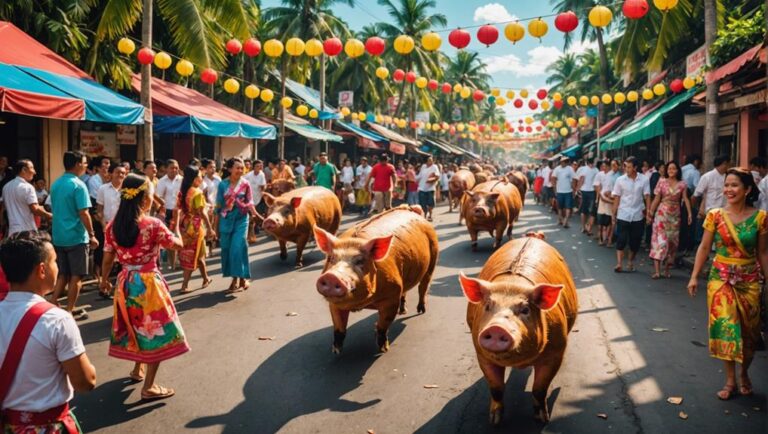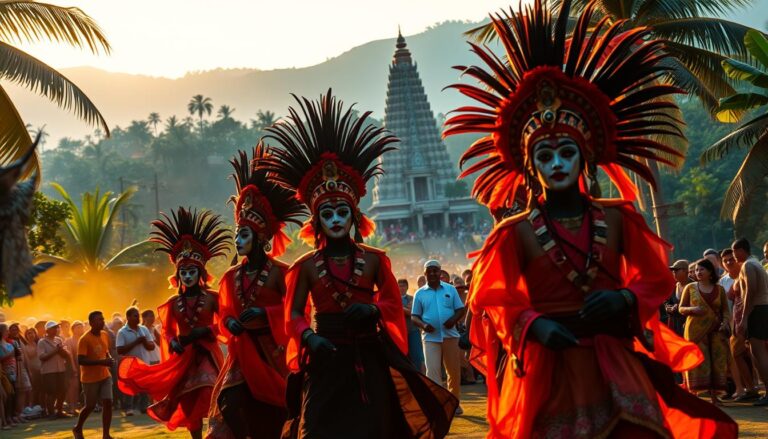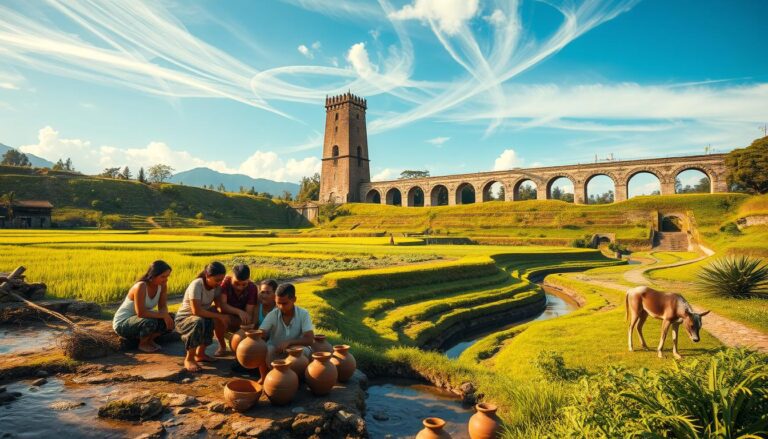Lubi Lubi Festival: Sarangani’s Lubi Lubi Festival: Traditions & Schedule
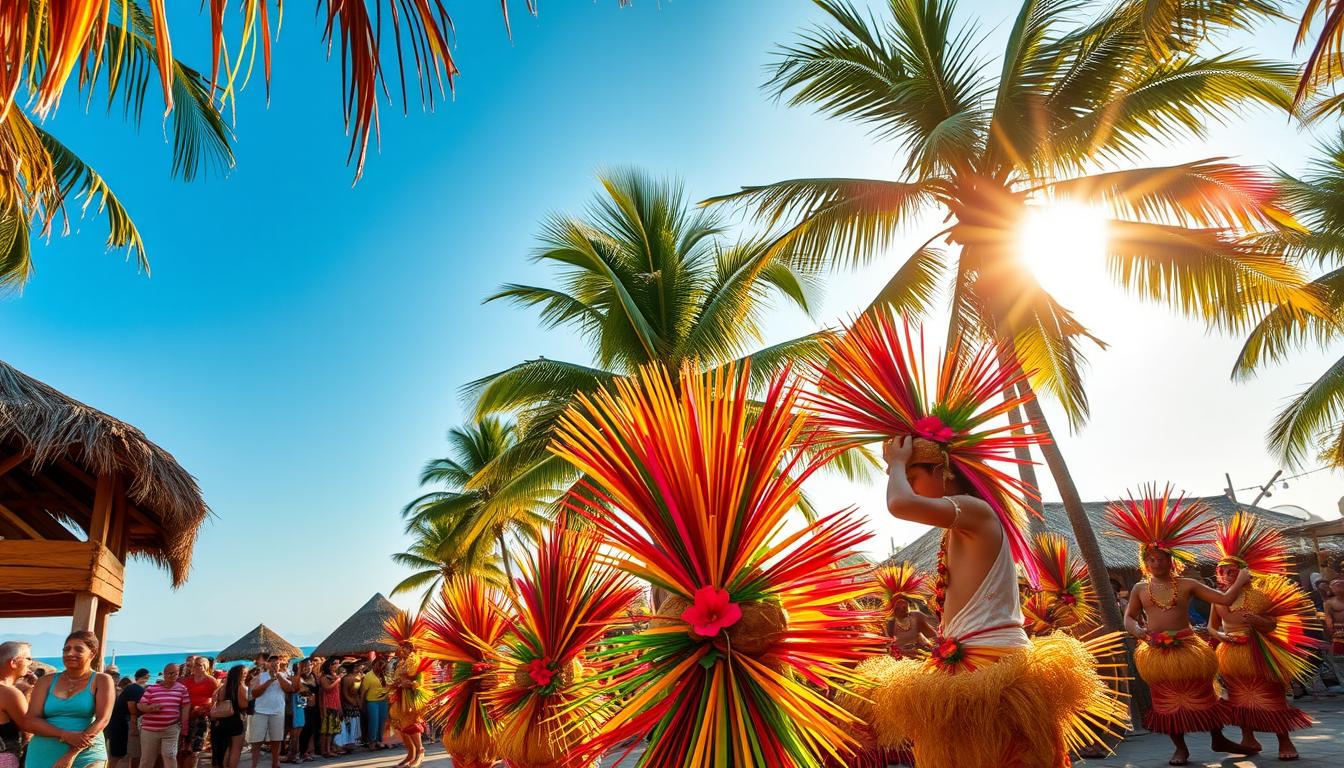
Every October 8, the coastal town of Glan in Sarangani comes alive with colorful traditions during its annual cultural celebration. This event honors the region’s identity as the “Coco Queen of the South”, blending history, agriculture, and creativity into a single, spirited gathering. Locals and visitors alike gather to celebrate the coconut’s role in shaping the town’s economy and way of life.
Since its founding in 2000, the festivities have grown to include street performances, dance competitions, and displays of craftsmanship using coconut materials. Vibrant parades wind through the streets, with participants wearing costumes adorned with shells, husks, and leaves. These activities not only entertain but also highlight the deep connection between the community and its natural resources.
Beyond the lively atmosphere, the event supports local businesses by showcasing coconut-based products. From cooking oil to handicrafts, the industry remains central to Glan’s growth. This article explores the traditions, schedule, and lasting impact of Sarangani’s beloved October tradition.
Key Takeaways
- Celebrated every October 8 in Glan, Sarangani, marking the town’s founding anniversary.
- Highlights the cultural and economic importance of coconuts through art and performances.
- Features street dancing, parades, and costumes made from coconut materials.
- Established in 2000 to honor local heritage and boost the coconut industry.
- Includes diverse activities like beauty pageants, job fairs, and fireworks displays.
Introduction to the Lubi Lubi Festival
Marking both history and harvest, Glan’s October event honors its coconut heritage. Known locally as “lubi”, the coconut tree symbolizes life and abundance in this coastal town. Nearly 90% of Glan’s land thrives with these palms, earning it the title “Coco Queen of the South”. This celebration bridges past traditions with modern economic vitality.
Overview and Significance
The gathering highlights how coconuts shape daily life—from food to crafts. Street dancers wear costumes made of husks and leaves, blending art with agriculture. Beauty pageants spotlight local talent, while craft exhibits display bowls, mats, and oils derived from the tree of life.
Economically, the event fuels Glan’s coconut industry. Farmers and artisans gain visibility, boosting sales of regional products. One resident shares: “Our festivals remind us how nature provides everything—wind, water, and work.”
| Element | Description | Significance |
|---|---|---|
| Street Dance | Performers in coconut-inspired attire | Celebrates agricultural roots |
| Beauty Pageant | Contestants showcase local culture | Promotes community pride |
| Craft Exhibits | Products made from coconut materials | Supports small businesses |
This annual tradition also weaves in legends of the coconut’s spiritual role. Stories of blessings tied to the tree deepen its cultural value. As the town gathers each year, these narratives ensure history stays alive for future generations.
History and Origins of the Festival
The story of Sarangani’s iconic event begins with colonial-era plantations and indigenous traditions. Established in 2000, the Lubi-Lubi Festival initially honored Glan’s agricultural roots as the region’s top coconut producer. Early Spanish land policies in 1914 laid groundwork for large-scale cultivation, blending native practices with colonial cash crop demands.
Coconuts, Colonization, and Local Legends
Local folklore describes the coconut as a divine gift, with elders recounting tales of spirits residing in palm groves. “Our ancestors believed each tree carried blessings,” shares a community leader. Spanish colonization introduced systematic farming, transforming wild groves into organized plantations that fueled economic growth.
The Evolution of Festival Traditions
What began as harvest thanksgiving evolved into elaborate performances by the 2010s. Migrant workers from Cebu and indigenous B’laan groups infused new rhythms into traditional dances. The iconic street dance emerged, featuring costumes woven from husks and leaves.
Government initiatives in the 2000s further professionalized events, turning local pride into a regional attraction. Today, these traditions honor both the coconut industry and the diverse cultural threads that shaped Glan’s identity.
Cultural Traditions and Street Dancing
Vibrant hues and rhythmic movements transform Glan’s streets each year as dancers bring coconut-inspired stories to life. The heart of these celebrations lies in creative expressions that merge ancestral customs with contemporary artistry.
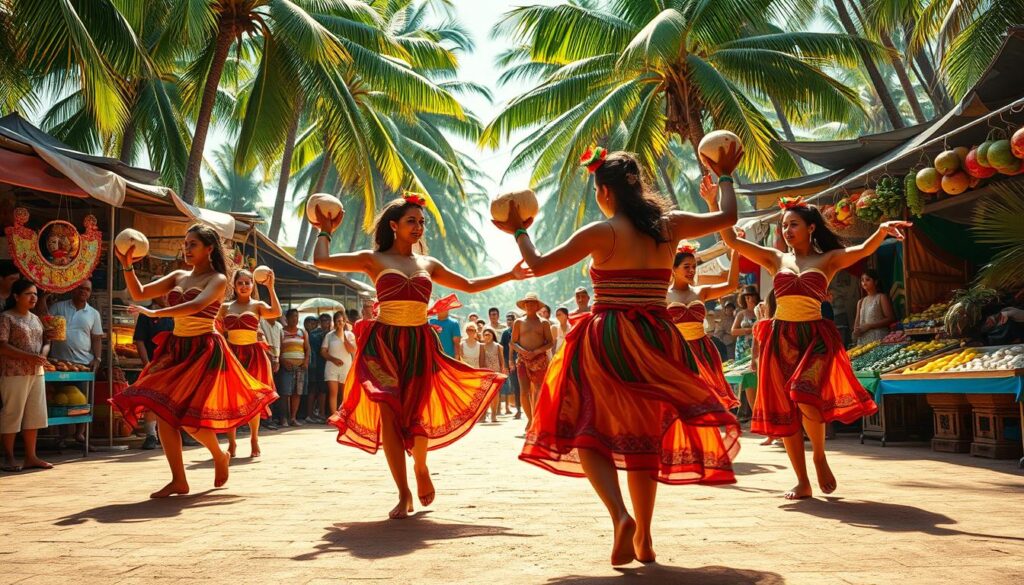
Costume Inspirations and Dance Interpretations
Performers wear outfits crafted from dried husks, woven leaves, and polished shells. These materials mirror the coconut tree’s lifecycle—from sprout to harvest. One artisan explains: “Every costume tells a story about our bond with nature.” Dancers mimic palm swaying and nut-harvesting motions, turning agricultural routines into poetic performances.
The Unique Coconut Dance Performance
The signature routine features synchronized steps symbolizing unity between land and people. Participants balance baskets filled with coconuts while executing intricate footwork. This blend of skill and symbolism has made the street dance competition a crowd favorite, drawing cheers from locals and visitors alike.
Community workshops prepare teams months in advance, ensuring traditions stay alive through younger generations. As drums echo through the town, these lively displays reinforce how cultural heritage thrives when shared with joy and pride.
Festival Schedule and Key Activities
Each October, Glan’s streets buzz with energy as the lubi-lubi festival approaches its peak on the 8th. Weeks of preparation culminate in a diverse lineup blending heritage with contemporary flair, drawing visitors from across the region.
Beauty Pageants, Competitions, and Cultural Shows
Crowning ceremonies like Mutya ng Glan and Bai de Glan spotlight local grace and intellect. These pageants emphasize cultural knowledge alongside traditional attire made from coconut fibers. Simultaneously, talent contests and battle of the bands energize younger crowds, blending modern music with folk rhythms.
Community stages host indigenous storytelling and coconut-harvesting demonstrations. “These shows teach our children where their food and crafts come from,” notes a teacher participating in cultural preservation efforts. Artisans also display handmade products, linking creative skills to the town’s economic growth.
Parade Highlights and Evening Entertainment
Morning parades burst with color as dancers in husk-adorned costumes move to drumbeats. Floats decorated with palm fronds and shells symbolize the “tree of life” sustaining the region. By dusk, live bands and fireworks light up the shoreline, creating a festive atmosphere for families and visitors.
Local restaurants serve coconut-based delicacies during evening markets, while job fairs connect residents with agricultural opportunities. This seamless mix of tradition and innovation ensures the industry remains vital for future generations.
Economic and Cultural Impact of the Coconut Industry
Glan’s identity as an agricultural powerhouse stretches across 83,000 hectares of lush palm groves—roughly 90% of its total land area. This staggering scale of coconut cultivation fuels both the local economy and cultural narratives, earning the town its royal nickname.
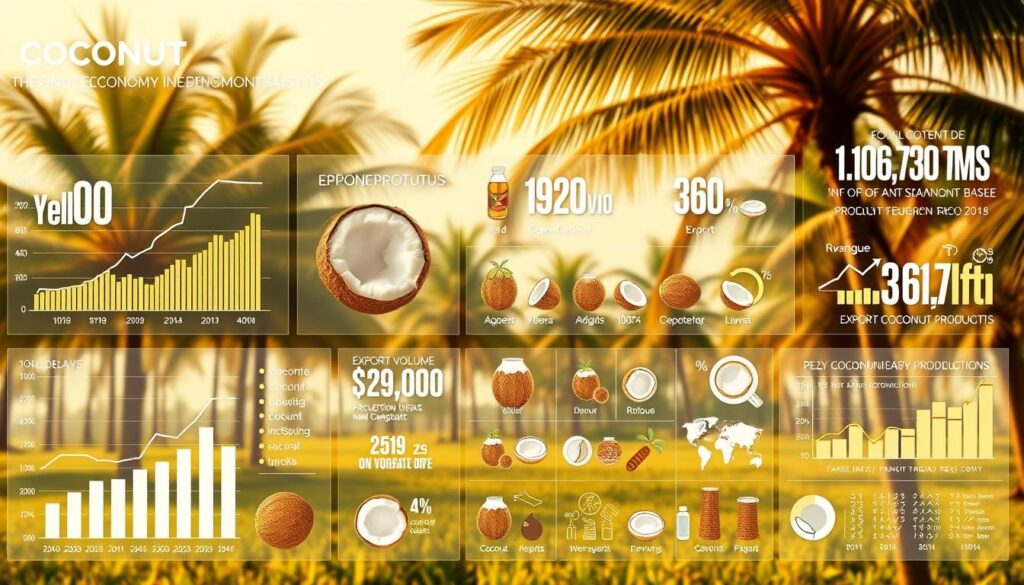
Glan as the Coco Queen of the South
Producing 446 million nuts annually, Glan dominates Region 12’s coconut industry. Farmers harvest enough coconuts daily to fill 25 shipping containers. “Our palms feed families and fund schools,” shares a cooperative leader. The “Coco Queen” title reflects both output volume and the crop’s role in shaping community life.
Beyond raw materials, value-added products drive growth. Coir exports hit 3,500 tons last year, while cooking oil factories employ 1 in 8 residents. Government-backed programs help artisans turn husks into handicrafts, doubling household incomes for many families.
This agricultural success fuels cultural pride. School curricula teach coconut history, and murals depicting harvest scenes adorn public spaces. The industry’s visibility through annual celebrations reminds everyone how nature and nurture combine to sustain the region.
Local initiatives keep traditions alive while boosting profits. Training centers now show farmers how to process sap into vinegar and sugar. As one grower notes: “Every part of the tree gets used—nothing goes to waste.” This circular approach ensures Glan’s palms remain rooted in both economy and identity.
Comparing Lubi Lubi Festival Celebrations in the Philippines
Across the archipelago, communities bearing the same cultural celebration name craft unique interpretations rooted in local history. While all honor the coconut’s role in daily life, timing and traditions vary dramatically between regions.
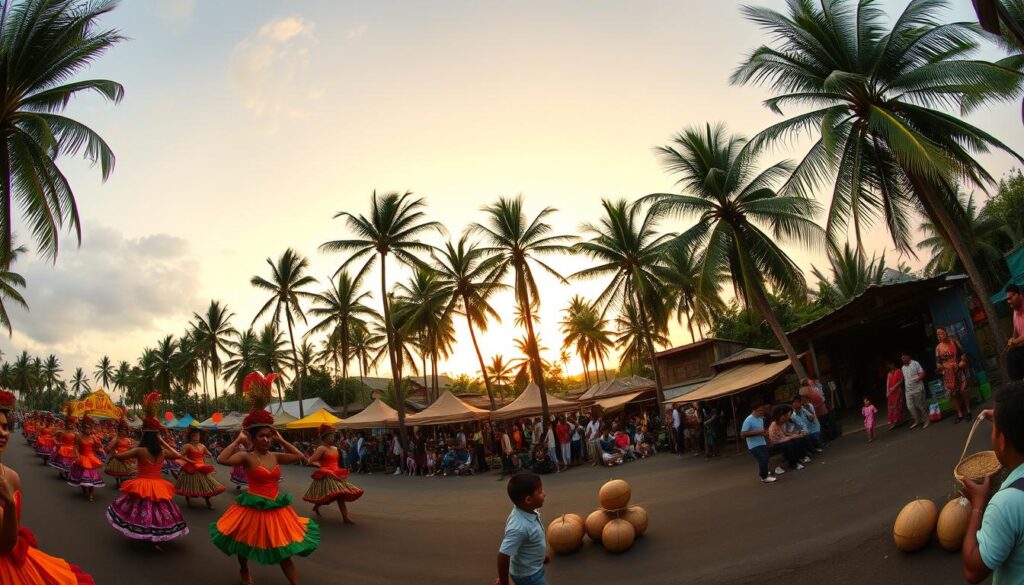
Variations in Timing and Themes Across Regions
Glan, Sarangani hosts its coconut festival every October 8, aligning with the town’s founding. In contrast, Gingoog City (Misamis Oriental) holds its version in May, timed with the San Isidro Labrador fiesta. Leyte’s event blends agricultural pride with Catholic patron saint veneration.
| Location | Timing | Key Focus |
|---|---|---|
| Sarangani | October | Historical anniversary & economic impact |
| Misamis Oriental | May | Religious processions + harvest rituals |
| Leyte | May-June | Santo Niño devotion & craft exhibits |
Leyte’s celebrations feature coconut-themed dance competitions where props honor ancestral farming techniques. However, studies show weaker sustainability in Leyte due to limited budgets, unlike Sarangani’s government-backed programs.
All versions share coconut-based products displays and community parades. As one organizer notes: “Our industry feeds both stomachs and traditions.” These events prove how a single word can sprout diverse cultural expressions nationwide.
Preserving Local Heritage and Traditions
Glan’s identity thrives through collective efforts to honor ancestral wisdom while embracing progress. Residents from eight barangays collaborate year-round to showcase their cultural legacy, blending artistry with agricultural pride.

Grassroots Efforts in Cultural Stewardship
Artisans lead workshops teaching youth to transform coconut husks into baskets and mats. “These skills connect us to our grandparents’ time,” shares a third-generation craftsperson. Street parade participants spend months designing intricate costumes using palm fronds and dyed fibers.
Local schools integrate heritage into curricula through:
- Traditional dance classes featuring harvest-inspired movements
- Oral history projects documenting elders’ coconut-related stories
- Field trips to family-owned coconut processing sites
| Initiative | Participants | Outcome |
|---|---|---|
| Artisan Workshops | 150+ residents monthly | 20% income increase for crafters |
| Youth Dance Programs | 8 school districts | 94% student retention rate |
| Heritage Tours | 2,000 annual visitors | Expanded market for local products |
Government partnerships provide funding for cultural stages and historical archives. Mayor Macapil notes: “Unity strengthens traditions like coconut roots stabilize soil.” This synergy between public support and community passion ensures Glan’s story continues evolving without losing its essence.
Traveling to Glan, Sarangani: Tips and Guidance
Reaching Sarangani’s coconut-rich town requires careful planning but rewards visitors with cultural immersion. Nestled in the southern region of Mindanao, Glan offers a blend of scenic routes and practical transport options for festival-goers.
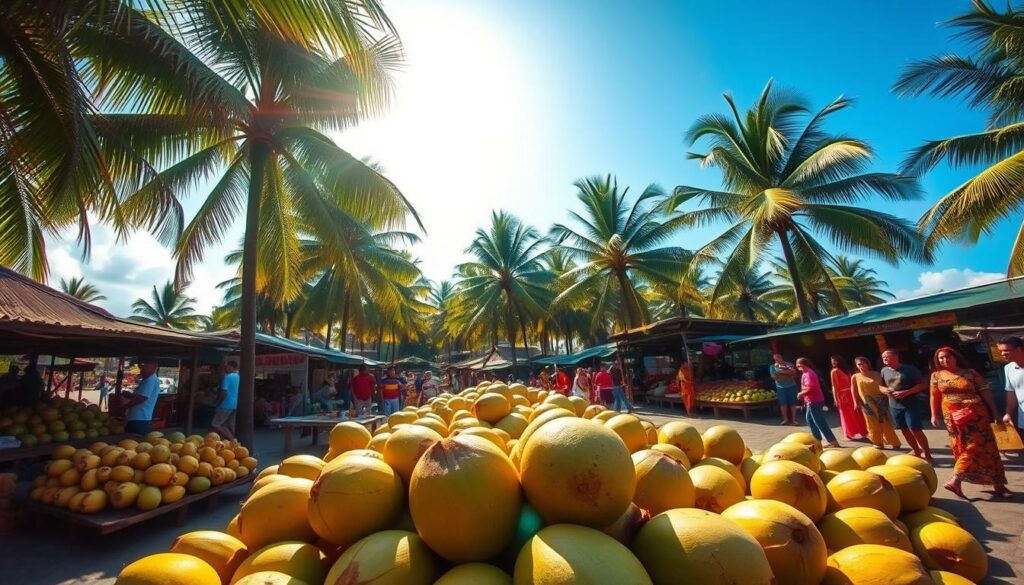
How to Reach Glan and Local Transport Options
Most travelers fly to General Santos City Airport (GES). Major airlines offer daily flights from Manila. After landing, take a taxi to Bulaong Terminal—a 15-minute ride costing ₱150-200. From there, vans depart hourly to Glan (₱100, 1.5 hours).
First-time visitors should note these landmarks:
- KCC Mall: Hub for van transfers
- Glan Public Market: Central drop-off point
- Gumasa Junction: Access to beach resorts
| Route | Transport Mode | Cost | Duration |
|---|---|---|---|
| Airport → Bulaong | Taxi/Tricycle | ₱150-200 | 15 mins |
| Bulaong → Glan | Van | ₱100 | 90 mins |
| Glan → Gumasa | Tricycle | ₱100 | 20 mins |
Plan arrivals between October 5-7 to secure accommodations. “Book return trips early—vehicles fill fast during peak dates,” advises a local driver. While English is widely spoken, learning basic phrases like “Asa ang terminal?” (Where’s the terminal?) helps navigate the area.
Understanding these routes ensures seamless travel through this cultivation-focused province. Whether joining the celebration or exploring the coconut industry, proper planning enhances every journey.
Conclusion
Glan’s annual celebration weaves together cultural pride and economic vitality through its coconut-centered traditions. For over two decades, this town has honored its agricultural roots with vibrant dance routines and creative performances that mirror palm groves swaying in coastal winds.
The event’s coconut industry impact remains undeniable. Farmers and artisans gain platforms to showcase products like oils and crafts, driving growth across Sarangani province. Visitors taste fresh delicacies while learning how every part of the “tree of life” supports livelihoods.
From historical parades to modern job fairs, the activities blend heritage with opportunity. Travelers exploring this region discover how traditions thrive alongside innovation. Planning trips around October ensures firsthand experiences of costume-making workshops and shoreline fireworks.
As Glan looks ahead, preserving these customs while boosting sustainable farming remains key. Witnessing the coconut industry’s role in community bonds offers unforgettable insights. Consider joining the next celebration—where culture grows as abundantly as the palms themselves.

